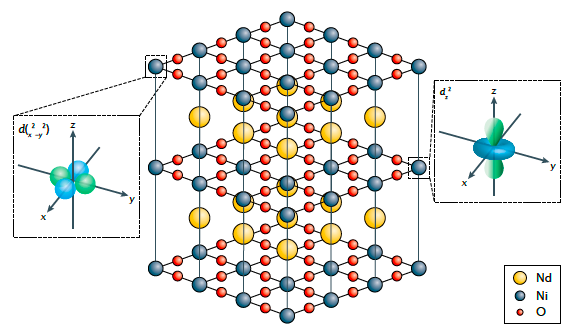Nature invites Warren Pickett to review year’s progress in High-Temperature Superconductor

Pickett’s review, entitled "The dawn of the nickel age of superconductivity,” discusses the discovery of high-temperature superconductivity in nickelates during the past year. While high-temperature superconductivity in cuprates has been studied for 30 years, this breakthrough raises new questions for physicists about the mechanism of superconductivity — despite the electronic similarities of Cu and Ni, it seems that nickelate superconductivity requires consideration of a second nickel atomic orbital.
Infinite layer nickelate, NdNiO2. A schematic showing the structure of an infinite layer nickelate, illustrating also the two active Ni orbitals. Red spheres indicate oxygen, gold spheres are Nd. A sample can be synthesized in thin film form by chemically extracting layers of oxygen atoms from a layer-by-layer synthesized thin perovskite film. The most evident effect of the synthesis technique was that it stabilized an `infinite layer' structure in which the layer of oxygen atoms linking CuO2 layers in most cuprates is missing.
Published: March 1, 2021, 10:57 am
